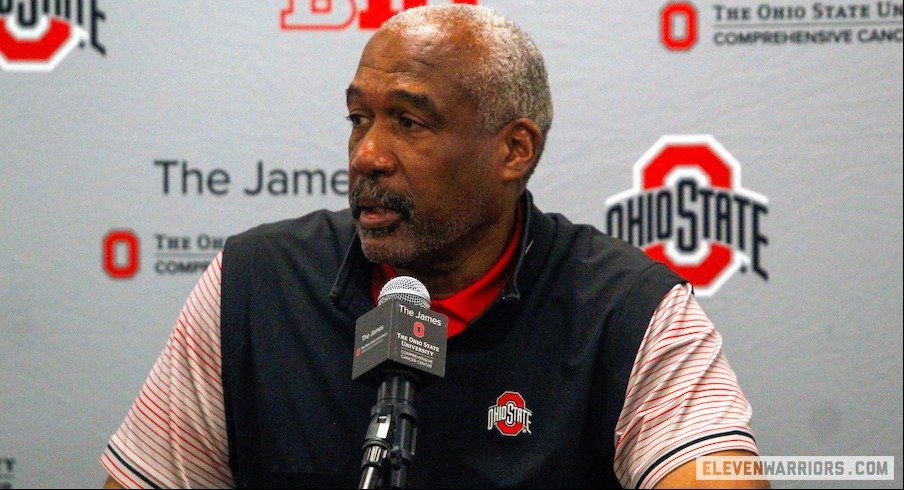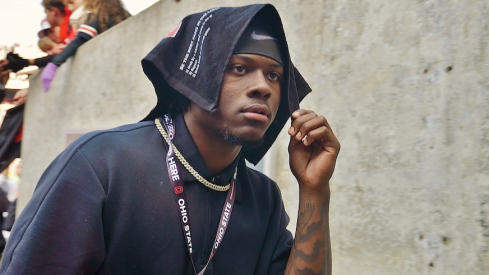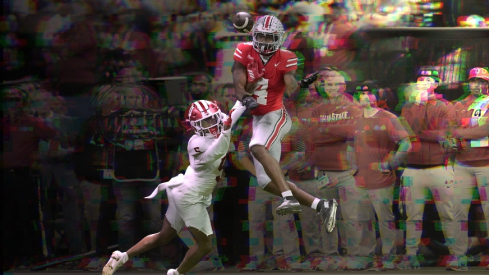Although name, image and likeness benefits for college athletes have created a new set of challenges for his athletic department, Ohio State athletic director Gene Smith believes working through those challenges is worth it for the opportunities it has created for the Buckeyes.
Ohio State’s athletes have benefitted from NIL as much as anyone in the country; as of Jan. 23, 225 different Ohio State athletes had made a total of $2,985,559 in total NIL compensation, more than any other school. That has helped those athletes support themselves and their families – and for athletes who aren’t on full scholarships, it’s helped them cover their costs of attending Ohio State – which Smith said makes him feel good.
“It’s really never been stress for me on NIL. It's been about learning. It's been about making sure we educate our student-athletes the right way,” Smith said last week. “It’s warming, it really is. Not stressful, just challenging just to constantly stay ahead of it.”
Given that, Smith believes allowing athletes to benefit from their name, image and likeness has been a net positive for college sports. But there are issues he believes need to be addressed to keep NIL from having a negative influence on college sports, particularly in recruiting.
While NCAA rules still prohibit schools from directly paying athletes and from using NIL deals as recruiting inducements, the NCAA has taken a mostly hands-off approach to actually regulating NIL, creating an environment that Smith described as “the wild, wild west.”
Smith is particularly concerned about the rise in collectives throughout the country that are being used to fund NIL deals for recruits on the condition that they attend specific schools. While Ohio State is not encouraging its boosters to make NIL deals with recruits, he also recognizes that could put the Buckeyes at a competitive disadvantage if other schools are doing so.
“In that particular space with the collectives where you see some of that recruiting stuff going on, it's no question we were behind, because we weren't doing that. And we're not encouraging that,” Smith said. “And all it takes is us losing one class for us to take a step back. So how do we make sure we stay in the right way, relative to NCAA rules, stay the right way. Because still technically, you're not allowed to recruit with these inducements. So there's a lot of issues.”
In order to help facilitate deals for its athletes who are already on campus while still following the letter of the law, Ohio State recently created an “NIL Edge” team, a group of administrators who will help connect brands and donors with Ohio State athletes. And he believes Ohio State can make a compelling pitch to recruits about how it can help athletes make NIL money without making any actual promises that would violate NIL rules.
“If you're recruiting, you’re coming to Columbus, Ohio, and Ohio State, it’s having those conversations with a TreVeyon Henderson or others to say, ‘Hey, this is what I get here,’” Smith said. “And I don't want to disparage other markets but the reality is this market, if you're an entrepreneur and you’re willing to get out there and do this thing the right way, you’re gonna hit home runs. If that's your interest.”
Smith said Ohio State’s compliance department has also been in communication with multiple collectives that are interested in funding NIL deals for Ohio State athletes.
“I know that there's collectives emerging in our marketplace,” Smith said. “There's a couple of them that have contacted our compliance people and our SWAT team (Ohio State’s team that reviews athletes’ NIL deals) trying to make sure they do it the right way, and their focus is more rightfully so on our current student-athletes, not recruiting.”
That said, Smith believes more regulations are necessary to prevent recruiting from becoming a financial arms race between NIL collectives. His peers on the NCAA’s Division I Board of Directors seemingly agree, as the NCAA announced Friday that the Board of Directors has asked the Division I Council to review “how name, image and likeness policies have impacted student-athletes,” citing concerns that “some activity in the name, image and likeness space may not only be violating NCAA recruiting rules, particularly those prohibiting booster involvement, but also may be impacting the student-athlete experience negatively in some ways.”
Smith said Wednesday, however, that he doesn’t think NCAA legislation is the answer for regulating NIL. With varying NIL laws already in place in more than half of the 50 states, Smith believes federal legislation is needed to properly regulate NIL in college sports – though he realizes that’s probably not imminent, given that Congress has more important issues to deal with.
“I'm hopeful that at some point in time, we do get federal legislation,” Smith said. “I don't think the NCAA is the answer in this particular case. I think it needs to be federal legislation. And that won't happen now, because of what's going on in Washington. But maybe it will, at some point. I think there's enough politicians who are paying attention and are interested, but it's gonna take time.”
Without firmer regulations, Smith believes NIL could force athletic departments to change the way they operate if they want to recruit at an elite level.
“We got to get a hold on the inducement part,” Smith said. “That’s the difference between us and the NFL, NBA, all the others; we recruit, we don't draft. So how do we find a way to eliminate that part of it? And so we need help in that space. Otherwise, it's just gonna keep going crazy and the whole model will be affected big-time. Because if we have to shift all of our focus to supporting collectives, then it's just gonna be a whole new financial model.”
In the meantime, though, Ohio State must try to strike the right balance between doing what it has to do to continue attracting top recruits and doing what’s best for its athletes while ensuring NCAA violations aren’t committed.
“What we have to do is make sure we don't lose ground in our competitive advantage in this space. But also do what's right for our student-athletes and protect them and make sure that they're taking advantage of it the right way,” Smith said.
Smith also understands that whether he likes it or not, the landscape of college athletics will continue to change and Ohio State will have to adapt with the times. But in the process, he doesn’t want the Buckeyes to lose sight of their primary objectives: Winning on the field of play and educating athletes to prepare them for life after sports off the field.
“NIL has changed our landscape and will continue to change it, we continue to learn from it and grow,” Smith said. “So it's just going to be a whole new ballgame as we move forward – lots of changes – and what we have to do is kind of get comfortable with the uncomfortable and adjust, and make sure we keep our core values and core mission at the heart of what we do. And that's our student-athletes.”


